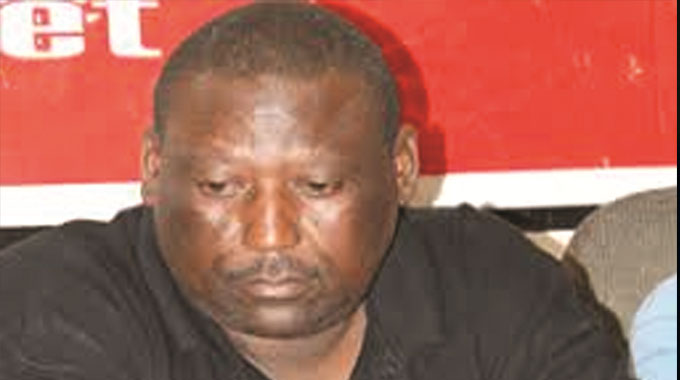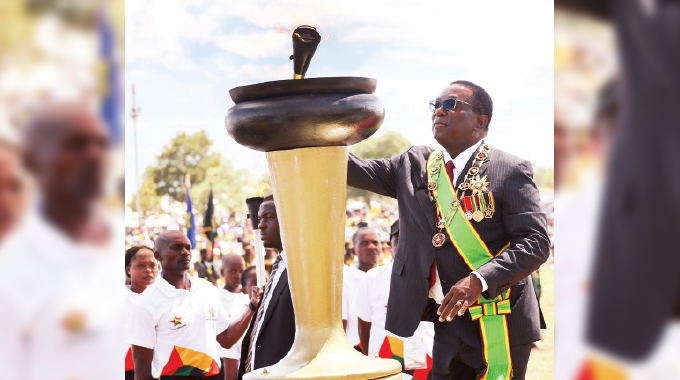EDITORIAL COMMENT: Bulawayo residents must continue to use water sparingly

A picture which we published on our front page yesterday of what is left of Bulawayo’s Umzingwane Dam sent a frightening message on the depth of the water shortage in the city.
It showed a small pool of water in the distance and what looks like the dam wall stretching across the photograph further in the background. Some evidently thirsty grass is growing where we think there used to be water. This got us wondering what has become of the aquatic life at the dam — the fish and tortoises; the crocodiles and hippos if there were any of these larger animals before the water got depleted. Now left with 3,95 percent of water at the 42 million cubic metre capacity dam, the Bulawayo City Council had no choice but to decommission it on Tuesday, the second reservoir to be cut off the city’s supply system over the past six months.
Upper Ncema Dam was decommissioned in June so with the disconnection of Umzingwane, the city is now being supplied by four dams — Lower Ncema, Insiza, Mtshabezi, and Inyankuni. Bulawayo residents fear that with the latest development, the water shedding exercise could be extended beyond the four days they spend with dry taps weekly.
“The City of Bulawayo would like to advise members of the public that Umzingwane Dam has been decommissioned with effect from Tuesday, 3 December 2019,” council senior public relations officer Mrs Nesisa Mpofu said Tuesday.
“The City remains with 4 out of 6 dams (Lower Ncema, Insiza, Mtshabezi, and Inyankuni) as available sources of surface water supply. BCC further advises that the decommissioning of Umzingwane Dam reduces the input of raw water to 95 megalitres per day against a current daily average consumption of 131.6 ml/day (Monday, 25th November to Monday, 2nd December 2019) despite the 96-hour water shedding programme.”
The water crisis in the city is largely a result of low inflows into its dams during the 2018/19 rainy season. Residents hope for better this term. The season has, however, not been promising as the dams had, by last week, received only four million cubic metres of water, equivalent to a mere 2,6 percent.
Umzingwane and Lower Ncema had received zero inflows. The only two dams that had received significant inflows were Mtshabezi at 2,1 million cubic metres and Inyankuni at 1,5 million cubic metres. Insiza Mayfair Dam got 101 000 cubic metres and Upper Ncema 125 000 cubic metres. Cumulatively, Bulawayo’s dams were at 36,9 percent full last week with Mtshabezi being 61,24 percent full, Inyankuni at 53,8 percent full and Insiza Mayfair, with a carrying capacity of 173 491 000 cubic metres is 40,56 percent full.
Lower Ncema which has a carrying capacity of 18 237 700 cubic metres is 19,45 percent full, Umzingwane with a carrying capacity of 44 663 500 cubic metres is 4,21 percent full while Upper Ncema which has a carrying capacity of 45 458 500 cubic metres is 3,7 percent full.
Conditions have, in recent weeks, been extremely hot and dry. As a result there have been marginal rains countrywide meaning that inflows into dams have been low. Also because of the extreme heat and dryness, water loss through evaporation has been very high.
Bulawayo residents are thus praying that more rains fall for Umzingwane Dam to be worth its name again; the same for Upper Ncema Dam. This is so because it is tough having to go for four days every week without running water. Dishes and clothing have to be washed daily while toilets have to be cleaned and flushed all the time. Doing these chores is a huge effort especially in a house occupied by a large family.
The Meteorological Services Department projected substantial rains to fall beginning yesterday in Bulawayo, south of Midlands, south of Masvingo as well as Matabeleland South, the province where all of Bulawayo’s water supply dams are situated. Consistent with the forecast, Bulawayo woke up to overcast conditions with some rains falling in the afternoon. The hope is for the rains to intensify and be sustained so that the city’s dams get replenished for residents to get the reprieve they deserve.
While we patiently wait for the rains, we re-send the message to Bulawayo residents for them to continue using water sparingly as council always urges them to. They must avoid using hosepipes in watering their vegetable gardens or lawns; they must fix any water leakages at their properties; they must keep their taps firmly closed. Those who are privileged to have working boreholes on their properties are encouraged to use them more so that they leave the little water available to those who exclusively depend on council supplies. We, however, advise those with boreholes to take the necessary precautions as borehole water is not always clean and safe.











Comments